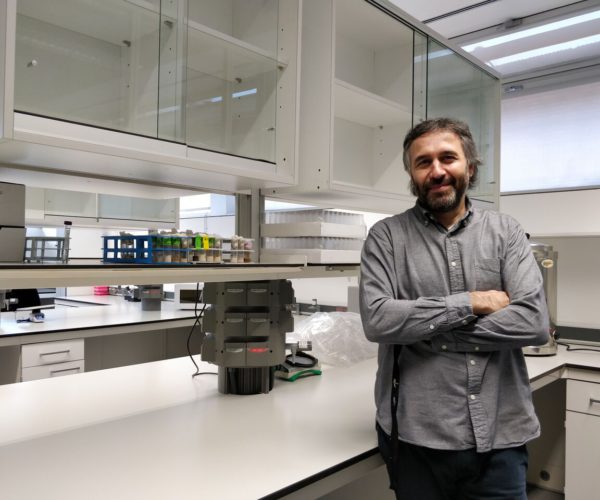Researchers from IRBLleida describe the first model of adult metastasis developed in the fruit fly
This research will help to identify those genes that play a key role in the initiation of metastasis
The research, led by Andreu Casali from the Institut de Recerca Biomedica de Lleida (IRBLleida) and the University of Lleida (UdL) together with Kyra Campbell, from the University of Sheffield, has managed to generate metastatic tumors in the intestine of adult flies, able to disseminate and grow forming secondary macroscopic tumors in distant organs. This research opens the door to use many of the tools that Drosophila provides to better understand the first steps of the metastatic process. The research, carried out in collaboration with the IRB Barcelona, has been published in the journal Nature Communications.
Metastasis is a very complex process whereby tumor cells escape from the primary tumor and spread to other organs, where they grow up forming new tumors. Despite its clinical relevance, since it causes 90% of cancer-related deaths, many of the mechanisms that drive it are still unknown. This lack of knowledge is due, in part, to the lack of animal models capable of reproducing the complexity of the metastatic process.
So far, experimental models of metastasis in mice, generated by genetic engineering, have two important limitations, the long latency of metastasis and the low number of mice that shows metastasis, forcing the researchers to work with a large number of animals during a long period of time to accumulate sufficient data for analysis.
With the results of this study, the researchers have challenged the belief that flies’ life was too short to present metastasis and have generated a model that opens the door to take advantage of the ease of genetic manipulation offered by Drosophila to study metastasis. In a previous study, researchers had already shown that it is possible to generate tumors in the intestines of adult flies generating the very same mutations that cause human colorectal cancers in the intestinal stem cells. Now, the researchers have been able to identify that the expression of a gene called Snail in these same tumors is capable to induce metastasis. Therefore, the presence of Snail favours tumor cells to leave the primary tumor and migrate towards other tissues and organs of the organism, where they grow forming secondary tumors. This model has many advantages, including its low economic cost, rapidity (the analysis of metastasis can be done three weeks after the induction of tumors), the possibility of analyzing a large number of individuals, as well as the reduction of the number of vertebrate animals necessary for research.
The research group now intends to use this model to identify those genes that play a fundamental role in the initiation of metastasis. In collaboration with the Oncology Department of the University Hospital Arnau de Vilanova, they also seek to investigate whether the presence or absence of these genes could have a predictive power and help health professionals determine the likelihood that a patient has started a process of micro metastasis. Furthermore, this model will also allow the identification in vivo of new therapeutic compounds able to block the first steps of metastasis.
This study has been funded by the Ministry of Economy and Business, the Joseph Steiner Foundation, the Wellcome Trust / Royal Society Sir Henry Dale and the Diputació of Lleida.
Reference article: Collective cell migration and metastases induced by epithelial-to-mesenchymal transition in Drosophila intestinal tumors, Kyra Campbell, Fabrizio Rossi, Jamie Adams, Ioanna Pitsidianaki, Francisco M. Barriga, Laura Garcia-Gerique, Eduard Batlle, Jordi Casanova, Andreu Casali. Nature communications (2019)




